Rounton Grange
Rounton Grange was designed in 1870 for Sir Isaac
Lowthian Bell and his wife by the leading Arts&Crafts architect Philip
Webb with whom Sir Lowthian had a long patronage. Philip Webb also
designed New Hall at Washington for Lowthian Bell and Red Barns in Redcar
for his son Hugh Bell. The latter two buildings are still standing, but
unfortunately Rounton Grange was demolished in 1953 after attempts to
first sell it and then give it to the National Trust failed. During World
War II it was requisitioned to house German and later Italian prisoners of
war who were employed on the neighbouring estate farms.
There were two principal building phases in
Rounton. The first phase designed by Philip Webb for Isaac Lowthian Bell
in 1870-1880 included The Grange, Coach House, Home Farm and Cottages and
The School. The Grange was later extended by Webbs protege George
Washington Jack to add a large Common Room and long corridor. George Jack
who is better known for his furniture also designed many buildings in East
Rounton during the 1905-6 building phase for Hugh & Florence Bell
including the purpose built Village Hall and adjacent cottages, Rounton
House for the Estate manager, The Motor House and slightly later in 1909
The New Gatehouse (which was designed to look ancient). An excellent
introduction to the Arts&Crafts
buildings of the Bell Estate by Peter Burman is online and provides
a more detailed overview of the buildings design and their historical
context.
The only things that remain of the Grange are the
red tiled old kitchen courtyard floor and various photographs - some taken
by Gertrude Bell who was a prolific and talented photographer and of
particular note for their excellent technical quality the architectural
photographs taken by Country Life to illustrate their review of
Rounton
Grange in 1915. This article is made available
here by
kind permission of Country Life and IPC Media PLC with all rights
reserved. Original high quality photographic prints of the low resolution
images in the article are available to purchase from
Country
Life Pictures.
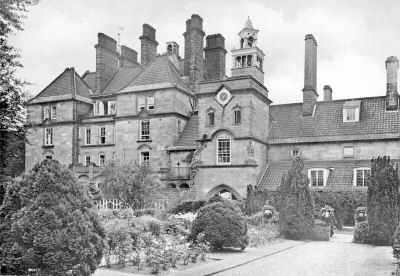 |
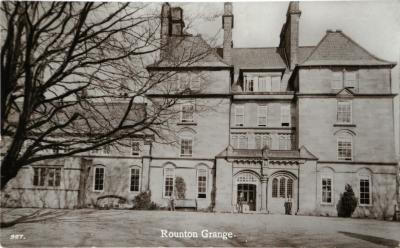 |
| Rounton Grange 1915 view from the garden (Country Life) |
Rounton Grange - front elevation and main entrance |
 |
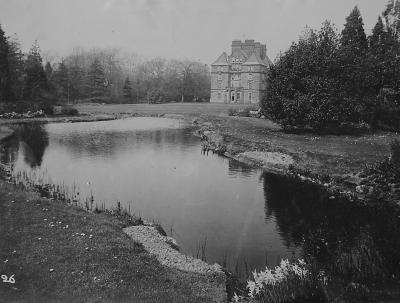 |
| The Dining Room (interior decoration by Morris & Co.) |
Rounton Grange - view from Lily Pond |
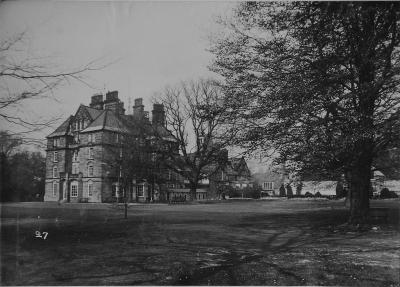 |
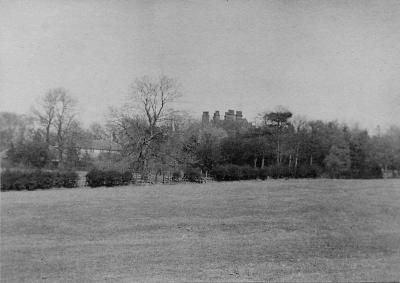 |
| Rounton Grange - view from lawns |
Rounton Grange - roof with chimneys and Coach House |
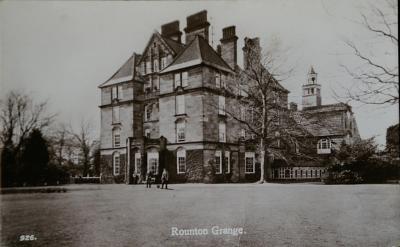 |
 |
| Rounton Grange - southern elevation across main lawn |
Rounton Grange with rockery and Lily Pond |
The addition of a large Common Room and associated long corridor was
done by George Jack in around 1910 for Hugh Bell. |
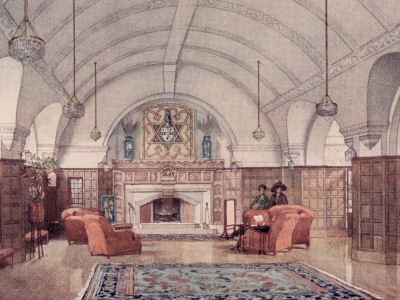 |
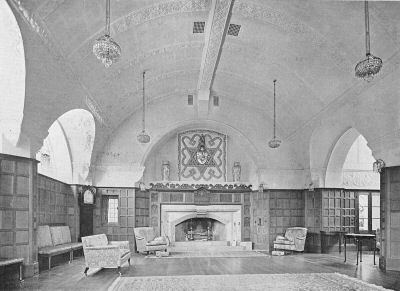 |
The Common Room - architects sketch by George Jack
(from Academy Architecture 1910) |
The Common Room as photographed by Country Life in 1915 |
|
|
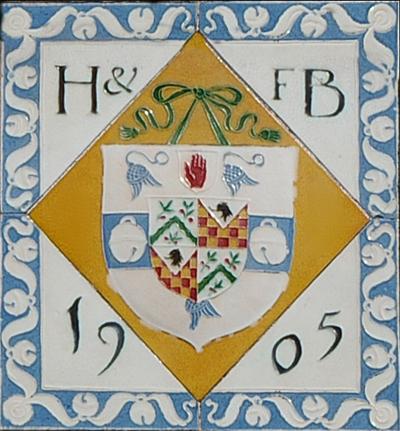 |
A year after the death of his father Sir Hugh Bell commissioned
George Jack to undertake another major phase of building works on the
estate to provide additional buildings for a generator and accumulators
to serve the Grange with a private electricity supply and a Motor House
to hold up to four vehicles. These buildings bear a ceramic plaque on
the usually rendered and limewashed brick walls with the family crest
and H&FB 1905 or 1906 as appropriate. In addition the tail of the
weathervane on the Village Hall is monogrammed H+FB.
Two exceptions to this rule are a half timbered extension to Keepers
Cottage which has a carved sandstone 1907 on the chimney and the rather
grand New Lodge which guards the entrance to the estate from the A19
which was built in 1909 using exclusively carved sandstone.
He also commissioned the Scottish Arts&Crafts glass designer
Strachan in 1906 to design a fine new East window as a memorial for his
parents to go behind the altar in East Rounton church. |
|
|
|
|
|
|









